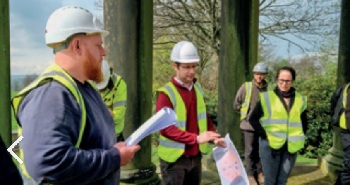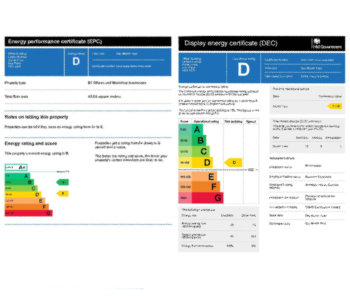Construction COSHH Failures and How to Avoid Them
Construction sites are full of risks and many of them come from hazardous substances. This is where COSHH (Control of Substances Hazardous to Health) steps in. It’s a set of regulations aimed at protecting workers from harm caused by exposure to hazardous materials. From cement dust to harmful chemicals, COSHH compliance is a must.
Ignoring COSHH guidelines can lead to serious health problems for workers, delays, fines and even lawsuits. Let’s examine where things often go wrong and how to fix them.
Contents |
[edit] Common COSHH Failures in Construction
Mistakes happen. However, when they involve hazardous substances, the consequences can be severe. Here are some of the most common COSHH failures on construction sites:
- Improper Storage: Hazardous substances need proper storage. It’s not enough to shove chemicals in a corner or leave them in unmarked containers. Without clear labelling and secure storage, spills, leaks, and accidents are almost guaranteed.
- Skipping Risk Assessments: Risk assessments are the backbone of COSHH compliance. Yet, they’re often ignored or rushed. Without a proper assessment, workers don’t know what they’re dealing with. This oversight puts everyone at risk.
- No Personal Protective Equipment (PPE): PPE can mean the difference between safety and injury. But on many sites, workers either don’t have the right gear or don’t use it properly. A mask doesn’t help much if it’s not fitted correctly and gloves won’t protect against chemicals if they’re the wrong type.
- Neglecting Ventilation: Dust, fumes and vapours are dangerous or fatal hazards. Proper ventilation can keep air quality safe, but many sites overlook this. Poor ventilation increases the risk of respiratory issues and long-term illnesses.
- Inadequate Training: Even with the right tools and procedures, workers need to know how to use them. A lack of training means workers might only recognise hazards and handle them properly.
[edit] The Impact of COSHH Failures
What happens when COSHH guidelines are ignored? The consequences can be brutal, affecting both workers and the project itself.
- Worker Health Issues: Exposure to hazardous substances can lead to short-term issues like burns or respiratory problems. Long-term exposure is even worse. Think chronic illnesses, cancers and lung diseases. These are preventable, but only with proper precautions.
- Delays and Costs: A COSHH failure can cause an accident that immediately halts work. Investigations, medical emergencies and cleanup can also bring projects to a standstill, costing money and time.
- Legal Penalties: Non-compliance with COSHH regulations can land companies in serious trouble. Fines and lawsuits are common. Worse, a poor safety record can damage an organisation’s reputation, making it harder to win future contracts.
[edit] How to Identify and Manage Hazardous Substances
Managing hazardous substances begins with understanding the risks they pose and knowing how to handle them safely. Many substances found in the workplace, such as cement, adhesives, solvents, and paint, can be hazardous to health if not managed correctly. Here’s how to approach this crucial task:
[edit] Recognise the Hazards
Start by identifying substances in your work environment. Labels, hazard symbols, and Material Safety Data Sheets (MSDS) provide essential information about the potential risks of various materials. Without recognising what is hazardous, you cannot take the necessary steps to protect workers.
[edit] Conduct Risk Assessments
Once the hazards are identified, conduct a risk assessment to understand the potential impact. Questions to consider include:
- How might workers come into contact with these substances?
- What health effects could exposure cause?
- What steps can minimise exposure?
A comprehensive risk assessment creates the foundation for safe handling and storage practices.
[edit] Implement Control Measures
Control measures depend on the type and severity of the hazard. Common practices include:
- Using safer alternatives where possible.
- Providing appropriate PPE, such as gloves, goggles, or respirators.
- Installing ventilation or extraction systems to remove harmful fumes or dust.
[edit] Invest in Safety Training
Training is essential for equipping workers to handle hazardous substances safely. Completing a Control of Substances Hazardous to Health (COSHH) training course provides employees with the knowledge to identify hazardous materials, understand the risks, and implement control measures effectively. Training programmes targeting this regulation will help teams ensure workplaces remain compliant while prioritising worker safety.
[edit] Best Practices for COSHH Compliance
Want to stay on the right side of COSHH regulations? Follow these best practices:
- Store Substances Safely: Keep hazardous materials in designated storage areas. Use secure containers with clear labels. Separate incompatible substances to avoid dangerous chemical reactions.
- Keep Documentation Up to Date: Every hazardous substance needs proper documentation. Maintain accurate records of risk assessments, safety procedures and incident reports and update them regularly to reflect new materials or changes in processes.
- Train Everyone: Regular training ensures everyone on site knows how to handle hazardous materials. This includes recognising hazards, using PPE and responding to emergencies.
- Use the Right PPE: Match the gear to the hazard. For example, a simple dust mask won’t protect against harmful vapours. Workers also need to know how to wear and maintain their equipment.
- Monitor Air Quality: Ventilation is key to maintaining safe air quality. Use extraction systems to remove dust and fumes at the source. For added safety, monitor air quality regularly to ensure it stays within safe limits.
- Prepare for Asbestos Risks: Asbestos is still a significant hazard on many construction sites and proper management is crucial. Completing a duty to manage asbestos training programme equips workers to identify and safely handle asbestos.
[edit] Conclusion
COSHH compliance is essential. Proper handling of hazardous substances protects workers, keeps projects on track and avoids costly legal troubles. From recognising hazards to ensuring safe storage and training, every step matters.
Proactive management is the key to avoiding failures. After all, the cost of making a mistake is far higher than the effort required to correct it.
Featured articles and news
Heritage building skills and live-site training.
Shortage of high-quality data threatening the AI boom
And other fundamental issues highlighted by the Open Data Institute.
Data centres top the list of growth opportunities
In robust, yet heterogenous world BACS market.
Increased funding for BSR announced
Within plans for next generation of new towns.
New Towns Taskforce interim policy statement
With initial reactions to the 6 month policy update.
Heritage, industry and slavery
Interpretation must tell the story accurately.
PM announces Building safety and fire move to MHCLG
Following recommendations of the Grenfell Inquiry report.
Conserving the ruins of a great Elizabethan country house.
BSRIA European air conditioning market update 2024
Highs, lows and discrepancy rates in the annual demand.
50 years celebrating the ECA Apprenticeship Awards
As SMEs say the 10 years of the Apprenticeship Levy has failed them.
Nominations sought for CIOB awards
Celebrating construction excellence in Ireland and Northern Ireland.
EPC consultation in context: NCM, SAP, SBEM and HEM
One week to respond to the consultation on reforms to the Energy Performance of Buildings framework.


















